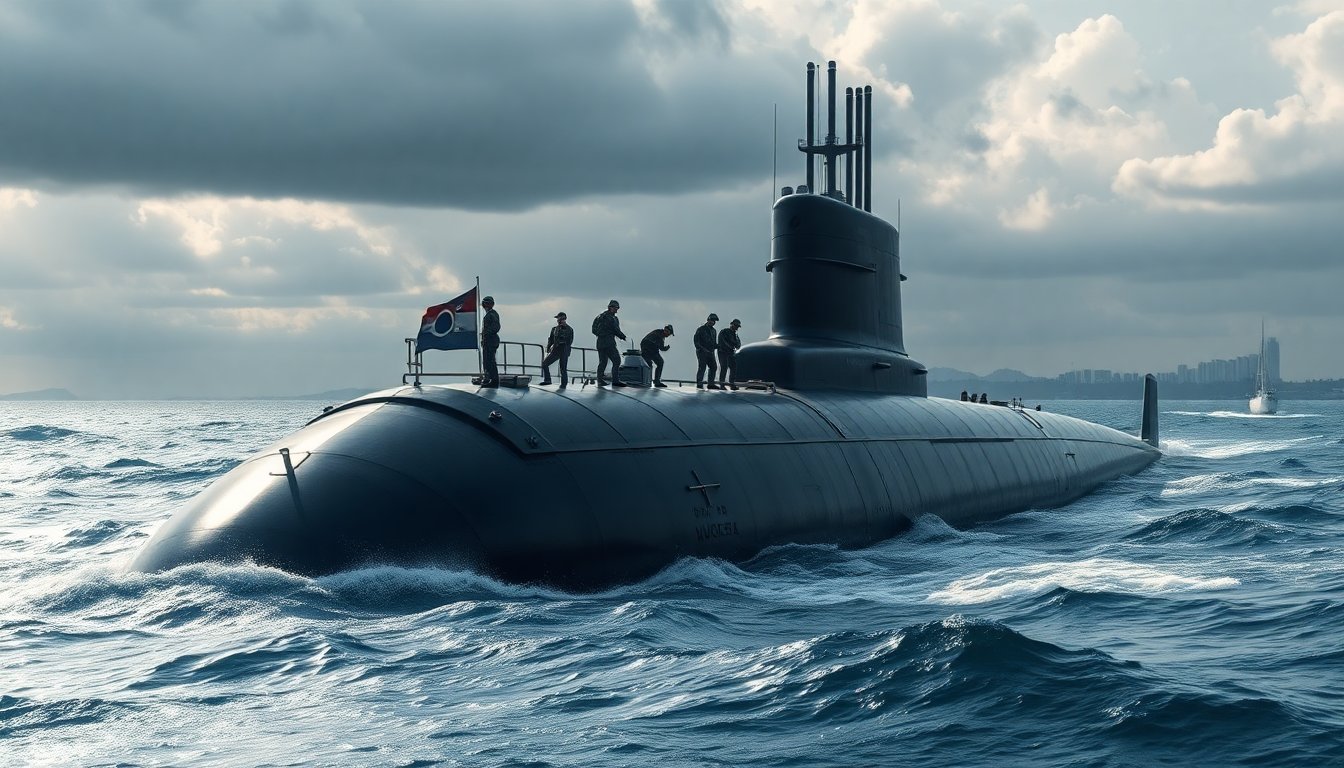Table of Contents
In light of escalating tensions with both China and North Korea, South Korea is intensifying its efforts to develop nuclear-powered submarines. During a recent summit, South Korean President Lee Jae-myung sought support from U.S. President Donald Trump for this significant military enhancement.
The objective is to alleviate the operational burden on American forces in the region while bolstering national defense capabilities.
The backdrop of this request is a historic trade agreement that promises substantial economic collaboration between the two nations. This agreement, which includes a commitment of $350 billion in investments, reflects the growing strategic partnership as both countries address their security concerns.
Strategic military advancements
South Korea has been considering the introduction of nuclear submarines for some time. Initial discussions began in 2003 during President Roh Moo-hyun’s administration but were halted due to project exposure. Now, with heightened threats from both Pyongyang and Beijing, the South Korean government is revisiting this crucial element of its naval strategy.
Economic implications of the U.S.-South Korea trade agreement
The recent summit resulted in a landmark trade deal that not only emphasizes military advancements but also includes significant economic commitments. According to Kim Yong-beom, a senior advisor to President Lee, the agreement encompasses $200 billion in cash payments and an additional $150 billion directed towards shipbuilding cooperation.
This investment is expected to strengthen South Korea’s defense industry and enhance military capabilities.
Additionally, the U.S. has agreed to reduce tariffs on South Korean exports, anticipated to stimulate economic growth and create a more favorable trading environment.
This trade agreement is not merely an economic arrangement; it represents a strategic maneuver aimed at reinforcing military alliances amid growing geopolitical tensions.
Navigating technical and legal hurdles
Despite the ambitious plans, South Korea faces substantial challenges in developing nuclear-powered submarines.
While the country has the expertise to manufacture conventional submarines, transitioning to nuclear technology presents considerable obstacles. One of the primary challenges involves the development of a compact reactor suitable for submarine deployment.
The nuclear energy treaty’s restrictions
The current bilateral nuclear energy agreement imposes restrictions on South Korea’s ability to enrich uranium. Specifically, Seoul is only permitted to enrich uranium to levels below 20 percent and solely for peaceful purposes. This treaty requires renegotiation if South Korea is to acquire nuclear fuel for its military submarines.
National Security Advisor Wi Sung-lac emphasized that amendments to the existing treaty would be essential for South Korea to procure the necessary fuel for military applications. He noted that these changes are critical since the current framework does not extend to military purposes, raising questions about compliance and strategic autonomy.
Public sentiment and political climate
The summit’s positive atmosphere contrasts sharply with public sentiment surrounding President Trump’s visit. Various protests erupted outside the venue, with individuals expressing both support and dissent regarding Trump’s policies. Demonstrators rallied with banners that read, “No Trump” and “Make Korea Great Again!” highlighting polarized opinions within South Korea regarding American influence in their domestic affairs.
These protests reflect the complex relationship between South Korea and the U.S. and indicate growing concern among citizens about the direction of their nation’s foreign policy. While some advocate for a stronger military alliance with the U.S. to counter threats from the Chinese Communist Party, others express caution regarding the implications of increased military spending and reliance on foreign powers.
The backdrop of this request is a historic trade agreement that promises substantial economic collaboration between the two nations. This agreement, which includes a commitment of $350 billion in investments, reflects the growing strategic partnership as both countries address their security concerns.0





